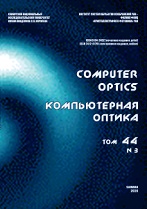|
This article is cited in 1 scientific paper (total in 1 paper)
NUMERICAL METHODS AND DATA ANALYSIS
Recognition of biosignals with nonlinear properties by approximate entropy parameters
L. A. Manilo, A. P. Nemirko
Saint Petersburg Electrotechnical University "LETI"
Abstract:
More and more attention is being paid to the development of methods for the objective analysis of biosignals for computer medical systems. The search for new non-standard methods is aimed at improving the reliability of diagnostics and expanding the areas of their practical application.
In this paper, methods for recognizing biomedical signals by the degree of severity of their nonlinear components are considered. An approach based on the use of approximate entropy closely related to Kolmogorov entropy (K-entropy) is used. Its parameters can be used to detect dynamic irregularities associated with nonlinear properties of signals. The algorithm for calculating this characteristic is considered in detail. Based on model experiments, its main properties are analyzed.
It is shown that the entropy of a finite sequence, calculated in accordance with a multistep procedure, can give an erroneous estimate of the degree of regularity of the signal. A procedure for correcting the approximate entropy is proposed, which expands the area of analysis of this function for estimating nonlinearity. It has been established that the transition to adjusted entropy makes it possible to increase the reliability of the detection of chaotic components. A set of entropy parameters is proposed for constructing recognition procedures.
Examples of solving the problems of detecting atrial fibrillation by the parameters of the non-linearity of the rhythmogram, as well as assessing the depth of anesthesia by the electroencephalogram (EEG) are given. Experiments conducted on real recordings of electrocardiogram (ECG) and EEG signals have shown the high efficiency of the proposed algorithms.
The proposed methods and algorithms can be used in the development of systems for monitor-ing ECG of cardiological patients, as well as monitoring the depth of anesthesia by EEG during surgical operations.
Keywords:
recognition of biosignals, nonlinear dynamics, approximate entropy, ECG and EEG analysis, atrial fibrillation, stages of anesthesia
Received: 16.05.2023
Accepted: 16.05.2023
Citation:
L. A. Manilo, A. P. Nemirko, “Recognition of biosignals with nonlinear properties by approximate entropy parameters”, Computer Optics, 47:5 (2023), 832–840
Linking options:
https://www.mathnet.ru/eng/co1185 https://www.mathnet.ru/eng/co/v47/i5/p832
|

| Statistics & downloads: |
| Abstract page: | 84 | | Full-text PDF : | 18 | | References: | 16 |
|




 Contact us:
Contact us: Terms of Use
Terms of Use
 Registration to the website
Registration to the website Logotypes
Logotypes







 Citation in format
Citation in format 
